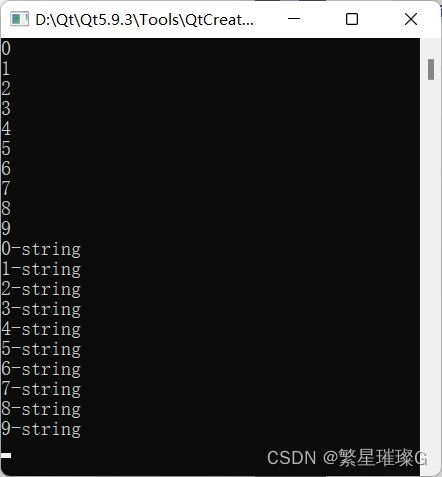c++11 动态内存管理-分配器 (std::allocator)
定义于头文件
template< class T >struct allocator; (1)
template<>struct allocator; (2) (C++17 中弃用) (C++20 中移除)
std::allocator 类模板是所有标准库容器所用的默认分配器 (Allocator) ,若不提供用户指定的分配器。默认分配器无状态,即任何给定的 allocator 实例可交换、比较相等,且能解分配同一 allocator 类型的任何其他实例所分配的内存。
| 对 void 的显式特化缺少成员 typedef |
(C++20 前) |
| 所有自定义分配器必须也无状态。 | (C++11 前) |
| 自定义分配器可以含有状态。每个容器或其他具分配器对象存储一个提供的分配器实例,并通过 std::allocator_traits 控制分配器替换。 | (C++11 起) |
| 默认分配器满足分配器完整性要求。 | (C++17 起) |
构造函数
std::allocator::allocator | allocator() throw(); |
(1) | (C++11 前) |
| allocator() noexcept; |
(C++11 起) (C++20 前) |
|
| constexpr allocator() noexcept; |
(C++20 起) | |
| allocator( const allocator& other ) throw(); |
(2) | (C++11 前) |
| allocator( const allocator& other ) noexcept; |
(C++11 起) (C++20 前) |
|
| constexpr allocator( const allocator& other ) noexcept; |
(C++20 起) | |
| template< class U > |
(3) | (C++11 前) |
| template< class U > |
(C++11 起) (C++20 前) |
|
| template< class U > |
(C++20 起) |
构造默认分配器。因为默认分配器是无状态的,故构造函数无可见效应。
参数
| other | - | 用以构造的另一 allocator |
析构函数
std::allocator::~allocator | ~allocator(); |
(C++20 前) | |
| constexpr ~allocator(); |
(C++20 起) |
销毁默认分配器。
获得对象的地址,即使重载了 operator&
std::allocator::address | pointer address( reference x ) const; |
(C++11 前) | |
| pointer address( reference x ) const noexcept; |
(C++11 起) (C++17 中弃用) (C++20 中移除) |
|
| const_pointer address( const_reference x ) const; |
(C++11 前) | |
| const_pointer address( const_reference x ) const noexcept; |
(C++11 起) (C++17 中弃用) (C++20 中移除) |
返回 x 的实际地址,即使存在重载的 operator& 。
参数
| x | - | 要获取地址的对象 |
返回值
x 的实际地址。
分配未初始化的存储
std::allocator::allocate | pointer allocate( size_type n, const void * hint = 0 ); |
(1) | (C++17 前) |
| T* allocate( std::size_t n, const void * hint); |
(C++17 起) (弃用) (C++20 中移除) |
|
| T* allocate( std::size_t n ); |
(2) | (C++17 起) (C++20 前) |
| [[nodiscard]] constexpr T* allocate( std::size_t n ); |
(C++20 起) |
调用 ::operator new(std::size_t) 或 ::operator new(std::size_t, std::align_val_t) (C++17 起)分配 n * sizeof(T) 字节的未初始化存储,但何时及如何调用此函数是未指定的。指针 hint 可用于提供引用的局部性:若实现支持,则 allocator 会试图分配尽可能接近 hint 的新内存块。
参数
| n | - | 要分配存储的对象数 |
| hint | - | 指向临近内存位置的指针 |
返回值
指向适当对齐并足以保有 T 类型的 n 个对象数组的内存块首字节的指针。
异常
若分配失败则抛出 std::bad_alloc 。
注解
遣词“未指定何时及如何”令标准库容器可以组合或优化掉堆分配,即使对直接调用 ::operator new 禁止这种优化。例如 libc++ 实现了它( [1] 与 [2] )
解分配存储
std::allocator::deallocate | void deallocate( T* p, std::size_t n ); |
(C++20 前) | |
| constexpr void deallocate( T* p, std::size_t n ); |
(C++20 起) |
从指针 p 所引用的存储解分配,指针必须是通过先前对 allocate() 获得的指针。
参数 n 必须等于对原先生成 p 的 allocate() 调用的首参数;否则行为未定义。
调用 ::operator delete(void*) 或 ::operator delete(void*, std::align_val_t) (C++17 起),但何时及如何调用是未指定的。
参数
| p | - | 从 allocate() 获得的指针 |
| n | - | 先前传递给 allocate() 的对象数 |
返回值
(无)
调用示例
#include
#include
#include
int main()
{
std::allocator ai; // int 的默认分配器
int* a = ai.allocate(10); // 10个 int 的空间
for (int i = 0; i < 10; i++)
{
ai.construct(a + i, i); // 构造 int
}
for (int i = 0; i < 10; i++)
{
std::cout << a[i] << '\n';
}
ai.deallocate(a, 10); // 解分配10个 int 的空间
std::allocator as; // string 的默认分配器
std::string * s = as.allocate(10); // 10个 string 的空间
for (int i = 0; i < 10; i++)
{
as.construct(s + i, std::to_string(i) + "-string"); // 构造 int
}
for (int i = 0; i < 10; i++)
{
std::cout << s[i] << '\n';
}
as.deallocate(s, 10); // 解分配10个 int 的空间
} 输出
返回最大的受支持分配大小
std::allocator::max_size | size_type max_size() const throw(); |
(C++11 前) | |
| size_type max_size() const noexcept; |
(C++11 起) (C++17 中弃用) (C++20 中移除) |
返回理论上可行的 n 最大值,对于它 allocate(n, 0) 调用可能成功。
大部分实现中,它返回 std::numeric_limits
参数
(无)
返回值
受支持的最大分配大小
调用示例
#include
#include
#include
struct Foo
{
Foo() {}
};
int main()
{
std::allocator ac; // char 的默认分配器
std::allocator ai; // int 的默认分配器
std::allocator ad; // double 的默认分配器
std::allocator as; // string 的默认分配器
std::allocator af; // Foo 的默认分配器
std::cout << "char max_size() " << ac.max_size() << '\n';
std::cout << "int max_size() " << ai.max_size() << '\n';
std::cout << "double max_size() " << ad.max_size() << '\n';
std::cout << "as max_size() " << as.max_size() << '\n';
std::cout << "Foo max_size() " << af.max_size() << '\n';
} 输出
在分配的存储构造对象
std::allocator::construct | void construct( pointer p, const_reference val ); |
(1) | (C++11 前) |
| template< class U, class... Args > |
(2) | (C++11 起) (C++17 中弃用) (C++20 中移除) |
用布置 new ,在 p 所指的未初始化存储中构造 T 类型对象。
1) 调用 new((void *)p) T(val)
2) 调用 ::new((void *)p) U(std::forward
参数
| p | - | 指向未初始化存储的指针 |
| val | - | 用作复制构造函数参数的值 |
| args... | - | 所用的构造函数参数 |
返回值
(无)
析构在已分配存储中的对象
std::allocator::destroy | void destroy( pointer p ); |
(C++11 前) | |
| template< class U > |
(C++11 起) (C++17 中弃用) (C++20 中移除) |
调用 p 所指的对象的析构函数
1) 调用 ((T*)p)->~T()
2) 调用 p->~U()
参数
| p | - | 指向要被销毁的对象的指针 |
返回值
(无)
比较两个分配器实例
operator==,!=(std::allocator)| template< class T1, class T2 > |
(1) | (C++11 前) |
| template< class T1, class T2 > |
(C++11 起) (C++20 前) |
|
| template< class T1, class T2 > |
(C++20 起) | |
| template< class T1, class T2 > |
(2) | (C++11 前) |
| template< class T1, class T2 > |
(C++11 起) (C++20 前) |
比较二个默认分配器。因为默认分配器无状态,故二个默认分配器始终相等。
1) 返回 true
2) 返回 false
参数
| lhs, rhs | - | 要比较的默认分配器 |
调用示例
#include
#include
#include
int main()
{
std::allocator a1; // int 的默认分配器
int* a = a1.allocate(1); // 一个 int 的空间
a1.construct(a, 7); // 构造 int
std::cout << a[0] << '\n';
a1.deallocate(a, 1); // 解分配一个 int 的空间
// string 的默认分配器
std::allocator a2;
// 同上,但以 a1 的重绑定获取
decltype(a1)::rebind::other a2_1;
// 同上,但通过 allocator_traits 由类型 a1 的重绑定获取
std::allocator_traits::rebind_alloc a2_2;
std::string* s = a2.allocate(2); // 2 个 string 的空间
a2.construct(s, "foo");
a2.construct(s + 1, "bar");
std::cout << s[0] << ' ' << s[1] << '\n';
a2.destroy(s);
a2.destroy(s + 1);
a2.deallocate(s, 2);
}

